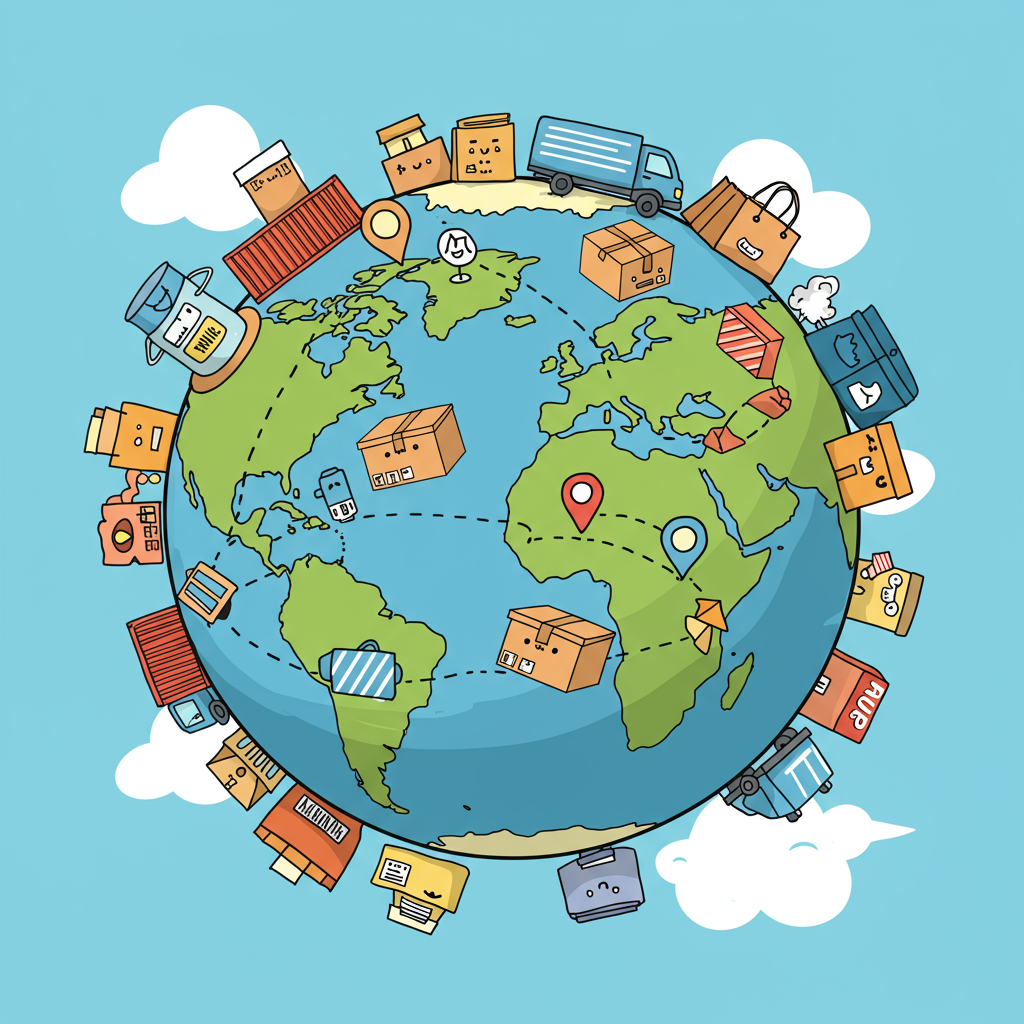Unlocking International Sales: A Merchant’s Perspective on Cross-Border Logistics
As a Shopify merchant, I know the incredible feeling of seeing a new order come in.
But what about those orders that originate from thousands of miles away, across oceans and continents?
International shipping can often seem like a complex maze, filled with regulations, customs, and unexpected costs.
However, I’m here to tell you that it’s also one of the most significant opportunities for growth your business can pursue.
Expanding your reach beyond domestic borders isn’t just about increasing sales volume; it’s about building a truly global brand and diversifying your customer base.
I’ve spent considerable time navigating these international waters, learning from both successes and challenges.
My goal with this article is to share my insights and help you craft a robust, efficient, and customer-friendly Shopify shipping strategy for your international orders.
First, I always emphasize the importance of understanding your target markets.
Before I even think about shipping, I conduct thorough research into where my products are in demand globally.
This involves looking at market trends, competitor analysis, and even local holidays or purchasing habits.
It’s also crucial to consider specific import regulations, prohibited items, and any unique cultural nuances that might affect delivery or product acceptance.
Next, choosing the right shipping carriers is absolutely paramount for international success.
I’ve worked with major global players like DHL, FedEx, UPS, and various national postal services.
Each carrier has its own strengths and weaknesses regarding speed, cost, reliability, and tracking capabilities.
For instance, I often find express carriers to be excellent for time-sensitive deliveries where speed is a priority, despite their higher cost.
Conversely, national postal services, often integrated with local carriers in the destination country, can be more economical for lighter, less urgent items.
I recommend comparing their services, transit times, and pricing structures for your typical package sizes and weights.
Then there’s the crucial aspect of shipping rates and how you present them to your international customers.
How will you charge them? I’ve explored several models in my own business.
You could offer flat rates, which simplify things for the customer but might not always cover your actual costs, especially for varied order sizes.
Alternatively, you might use calculated rates, directly integrating with carrier APIs to provide real-time shipping costs at checkout.
I’ve also seen success with tiered rates based on order value or weight, which can encourage larger purchases.
And, of course, offering free international shipping can be a powerful conversion tool, provided you can absorb the cost into your product pricing.
Customs and duties are often the biggest hurdle for merchants, in my experience, and they require careful attention.
It’s vital to understand the difference between DDP (Delivered Duty Paid) and DDU (Delivered Duty Unpaid).
I generally prefer DDP where possible, as it provides a smoother customer experience by ensuring all duties and taxes are paid upfront.
No surprise fees for the customer upon delivery means happier customers and fewer abandoned packages.
Accurate HS (Harmonized System) codes for your products are non-negotiable for customs clearance.
These internationally recognized codes classify your goods and determine the applicable duties and taxes.
Packaging and labeling also require special attention for international shipments.
I always ensure my packaging is robust enough to withstand longer transit times and multiple handling points.
All labels must comply with the destination country’s requirements, including customs declarations and accurate recipient information.
Don’t forget about international returns and exchanges; they are an inevitable part of doing business globally.
I always advise having a clear, transparent return policy in place for international orders.
This builds trust with your customers and reduces potential headaches down the line for both parties.
Shopify’s ecosystem offers fantastic tools to help with all of this.
I leverage various shipping apps from the Shopify App Store to streamline my processes, from rate calculation to label printing and even customs documentation.
These apps can automate much of the complexity, freeing up your time to focus on other aspects of your business.
Finally, clear and proactive communication with your customers is absolutely key.
I make sure to provide tracking information promptly and set realistic expectations for delivery times, especially for international orders.
Transparency about potential customs fees or delivery processes upfront is also something I prioritize to avoid any surprises.
By implementing these strategies, I’ve seen my international sales grow significantly, opening up entirely new revenue streams.
It’s an ongoing process of learning and optimization, but the rewards of a global customer base are immense.
I truly believe that with the right approach, you can unlock incredible global potential for your Shopify store.
What do you think about this article? I’d love to hear your thoughts and experiences with international shipping.
I hope this guide helps you confidently expand your reach and conquer the world of international e-commerce!






